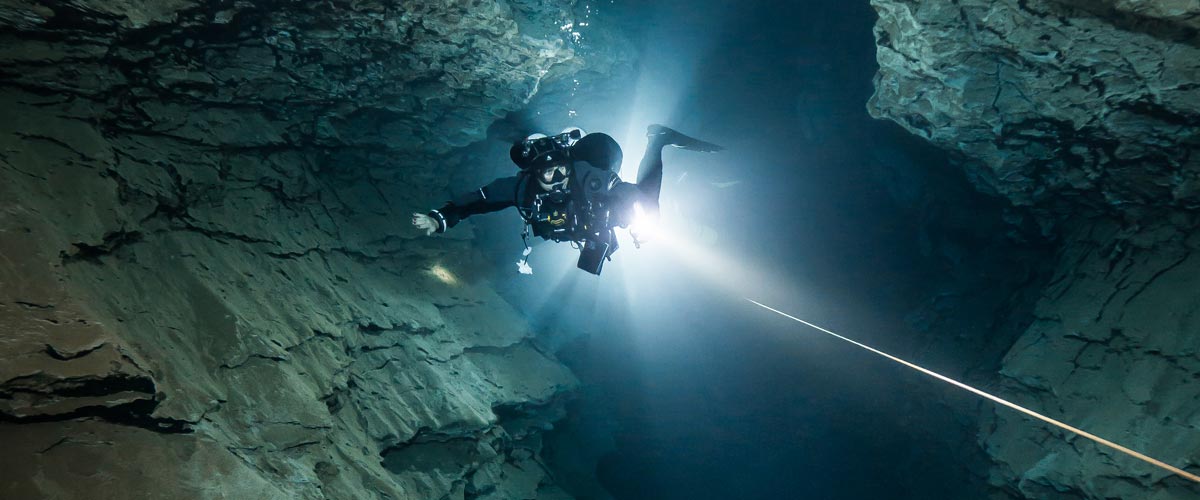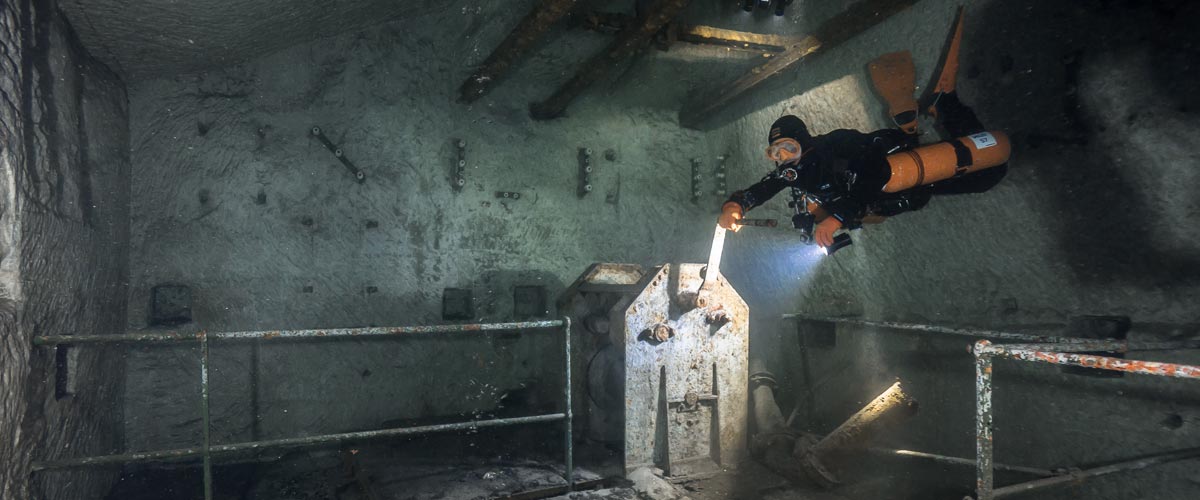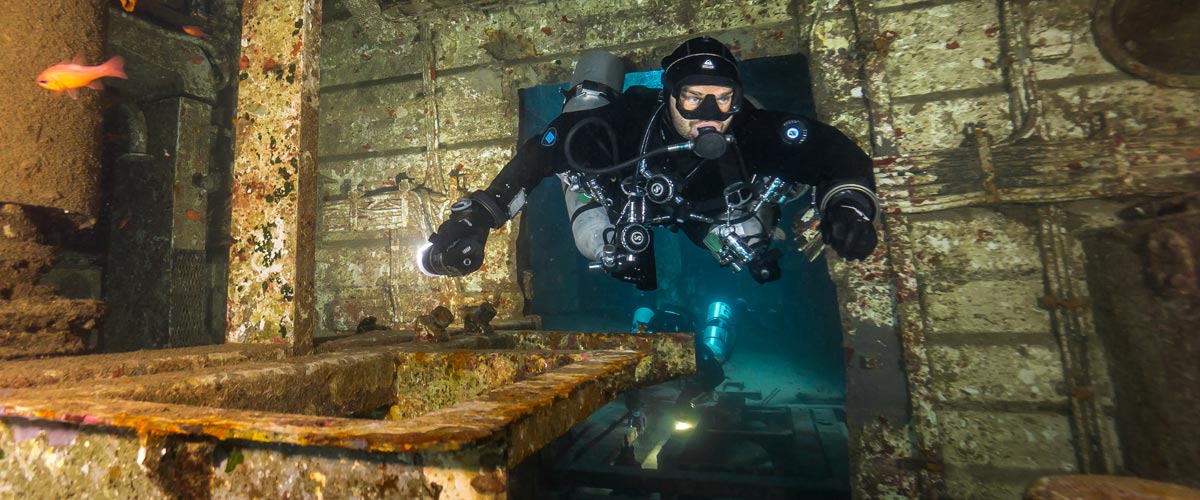Dive Training Blogs
Sea Legs and how to get them
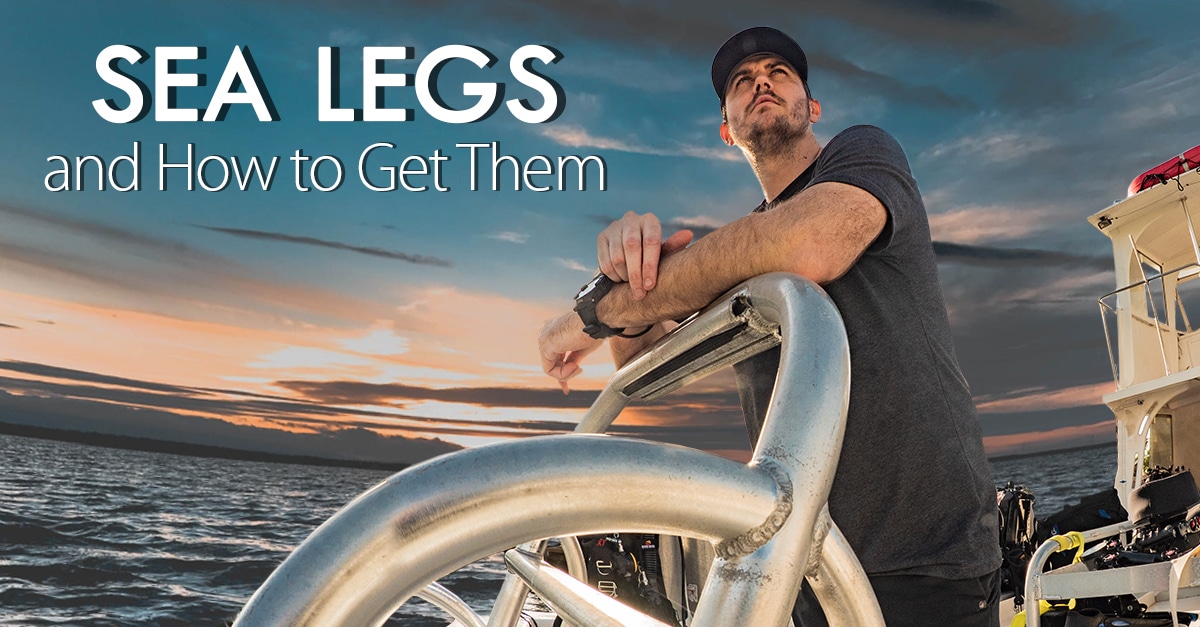
By Gemma Smith
Most of us have been there at some point in our diving journey. I know that I have, on more occasions than I would like to remember! First comes the initial excitement of going out for an awesome boat dive. Your gear is prepped and loaded on board, your buddies are ready, you start motoring out…and then it starts. The slight upset feeling in the stomach, followed by sensations of cold sweats. and then, often, by general misery. Oh yes, motion sickness (also known as sea-sickness or ‘Mal de mer’) is no laughing matter.
It can run the whole range of outcomes, from being mildly unpleasant to being utterly disabling. I know that at the start of my diving career that I missed so many dives when out on a boat in the choppy waters of the English Channel. The problem is, there is so much amazing diving to be done from boats! I didn’t want to give that up. Over the years I have tried and tested various methods that can lessen the effects of motion sickness, and in this article, I want to look at some of the causes of seasickness, as well as what you can do to prevent it.
So what is motion sickness?
In simple terms, motion sickness is a very common disturbance of the inner ear due to a repeated motion. Several factors in the body all work together to ultimately make you feel less than your best. It’s a phenomenon that involves your vestibular system (this is the twists and turns within your inner ear, and it plays an important part in the control of your equilibrium), your cerebellum (a part of the human brain that has many jobs, but specifically in this instance, it controls balance), the gastrointestinal tract, and the nerve connections between the inner ears and the eyes. The sickness is caused by a mismatch of information received from several sources.
Anyone can develop motion sickness. It is, however, true that different people often have a different level of tolerance. We see motion sickness all the time in kids, but, interestingly, pregnant women, and people who have a history of migraines are all more likely to suffer from it. Then, of course, there’s us: divers who like to go boat diving, even when our bodies don’t quite have our sea legs sorted yet.
What are the symptoms we can look out for then?
Oh, we have a whole range of possible effects of seasickness:
- Nausea
- Vomiting
- Often a marked paleness of the face (pallor)
- Shortness of breath
- Dizziness
- Drowsiness
- Sweating, often cold sweats
- An overall feeling of discomfort
- Just not feeling well (a feeling of malaise)
So how can we prevent (or at least lessen) the effects of sea-sickness?
- I’ve found that one of the key things that works for me is avoiding certain foods and drinks before I go boat diving. Lay off the alcohol the night before, as this will only dehydrate you. I’ve found that skipping my morning milky coffee also works wonders. Those with a sensitive stomach may find that leaving out all dairy products that morning will help. Heavy, spicy, or greasy foods are often best-avoided too. With that being said, it is important to not go out on an empty stomach. Have simple or bland meals, eat little and often, and stay hydrated! Dry and plain crackers are a good choice. Sometimes it is worth trying ginger tea, or even nibbling a little bit of ginger. Ginger is a well-known and trusted natural remedy for motion sickness. Peppermint tea has a similar calming effect on the stomach. Some people also find that taking small sips of a carbonated drink will help.
- Make sure you are well rested from the night before. Tempting as it is to stay up late and enjoy the social side of your dive trip, it won’t help you feel better the following morning. Being fresh for diving will markedly lessen your susceptibility to feeling unwell when out on the boat.
- Get some fresh air. Although all you may sometimes want is to hide away in the cabin, especially when the weather just isn’t that great, it is one of the worst things you can do. Get out on the deck and let the fresh air do its healing work. Just as long as you stay well away from the diesel fumes from the engine, it will make a world of difference. It is also worth thinking about your position on the boat. Oftentimes the middle of the boat will be the most stable, especially if seas start getting rough. Also, when you’re on the boat, don’t get overheated. Keep cool and stay under a sunshade if necessary. Try and avoid putting your exposure protection suit over your head, whether that be a wet or drysuit, until absolutely necessary. This is especially true if your suit has a particularly snug neck seal.
- Try looking at the horizon. Pick a point, and focus on it. Look out so your eyes can register the same type of movement changes that your ears are reporting. It’s worth making the effort to avoid reading or checking your phone, reading a book, or looking at instruments or gauges too much. It will only add to your body’s conflicting signals. This is also why it is a smart move to have all dive gear ready to go beforehand, so you aren’t having to build your dive set more than needed on a rocking and rolling boat.
- Think about applying some pressure. Sea-bands have been around for years. Basically, it is an elasticised wristband. There is a small stud on the band which applies pressure over the Nei-Kuan point (located within tissue about 3 centimetres above the wrist joint). The Nei-Kuan point is thought to have some control of nausea and vomiting. To be most effective it is important that a band is worn on each wrist, and ideally put on before the start of the journey. Many people swear by them, but that being said, there are currently no controlled trials on this technique.
- There are lots of medications on the market for helping with motion sickness. Make sure you do your research before picking one at random, though. Some can have side effects not compatible with diving. I personally try and avoid them, but make sure you contact a diving doctor or do some research on what DAN recommends before you make the decision to use medication.
- Remember, as disappointing as it is to miss a dive if you are feeling really unwell, don’t think that getting in the water is always the best idea. While the mild nausea that you have on the boat may lessen when in the water, it will take time. It’s not fair to either yourself or your buddies to put them in the position where the dive needs to be called. While vomiting underwater is possible, it is not something you should ever knowingly take a chance on. Especially in the less experienced divers, it may cause confusion and panic. That’s how dive accidents happen.
These are just some of the many possibilities for limiting your reaction to motion sickness. Unfortunately, there is no one magic cure for ‘Mal de mer’. What works on one dive may not work at all on a subsequent dive. The important thing is to plan ahead, especially if you know you are prone to feeling queasy anyway. Your preparations and possible behaviour from the night before can really have an impact on how much you enjoy your following day of diving.
It is also worth pointing out that you have to be aware that what you believe may be seasickness is possibly hiding other conditions. Feeling unwell before the dive may be quite normal for you, but monitor yourself if you start feeling less than great when you surface. If you feel dizzy, nauseous, or generally unwell, it is possible that it is a sign of decompression sickness, particularly related to the central nervous system or a vestibular problem. It’s important to remember that there is nothing to be embarrassed about if you are sick. It’s a symptom that most seafarers will have suffered from at some point in the past, the present, or even the future! Don’t laugh it off. Stay aware and focused, and most importantly of all, stay safe.
To find out more about International Training, visit www.tdisdi.com.

Blogs
Intro to Tech: What is it about?
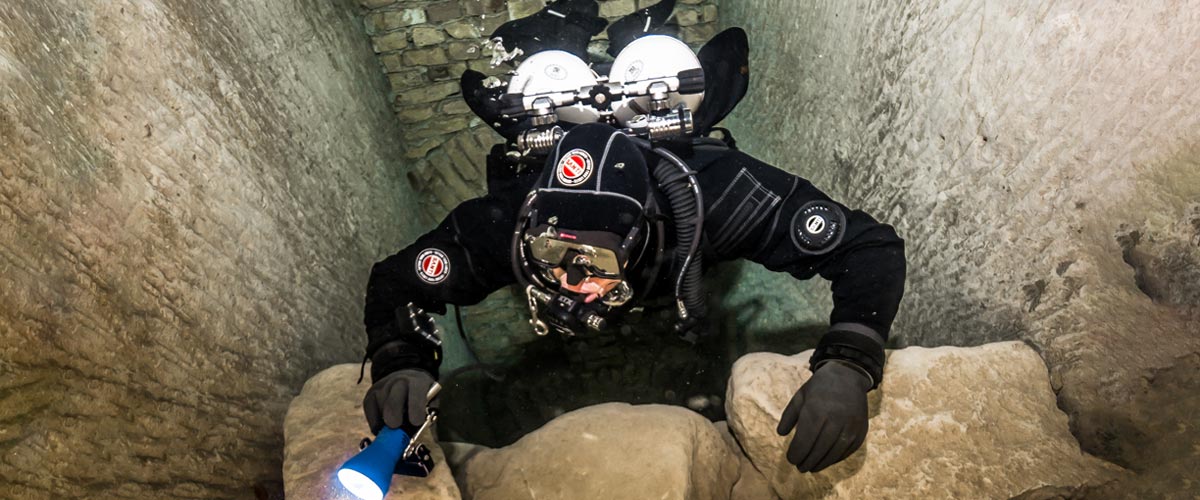
Article by José Pablo Mir
Pictures by Cezary Abramowski
The world of technical diving is exciting. It opens the door to new sites, depths, and bottom times. More importantly, it opens our minds to a new way of planning, facing, and experiencing dives, even those not purely technical.
Becoming a technical diver is a process, and like in other aspects of life, we should find the proper entry point that suits us best based on our knowledge and experience. The Introduction to Technical Diving course from TDI -the world’s largest and most recognized technical diving teaching organization- is the best option for divers who have yet to gain experience in the fundamental aspects of this new practice. The course’s content and its embrace of new techniques and technologies make it possible to acquire a solid foundation to learn and gain experience in this practice properly.
Becoming a technical diver is not something that happens overnight, whether deciding to become one or receiving a certification card stating we are now technical divers. It is a slow process extending farther away than any introductory course. It requires effort and dedication. But it will bring us satisfaction from day one -or two.
It is a matter of mentality
First, we must understand and accept that technical diving, involving greater depths, longer bottom times, exotic gases, virtual or real ceilings, and more, comes with higher levels of risk than the sport diving we have been practicing until now.
Although this discussion usually starts with a warning about risks, as I’ve done in the previous sentence, our practice is not a game of chance.
Technical diving is a rational activity that requires maturity and good judgment, and we will put everything into ensuring that each dive is a successful one -meaning we return from it safe and sound. With this understanding, we will strive to establish a mental attitude more aligned with our practice and its realities.
This new “technical diver” mindset we will develop will lead us to be more cautious in our executions, more analytical in our plans, more rational in our strategies, and more detailed in our procedures.
Experience will keep teaching us to know ourselves better, to keep our anxiety and other emotions under control, and to manage our impulses. Over time, our senses will sharpen, and we will be more attentive to the particulars of the situation we find ourselves in.
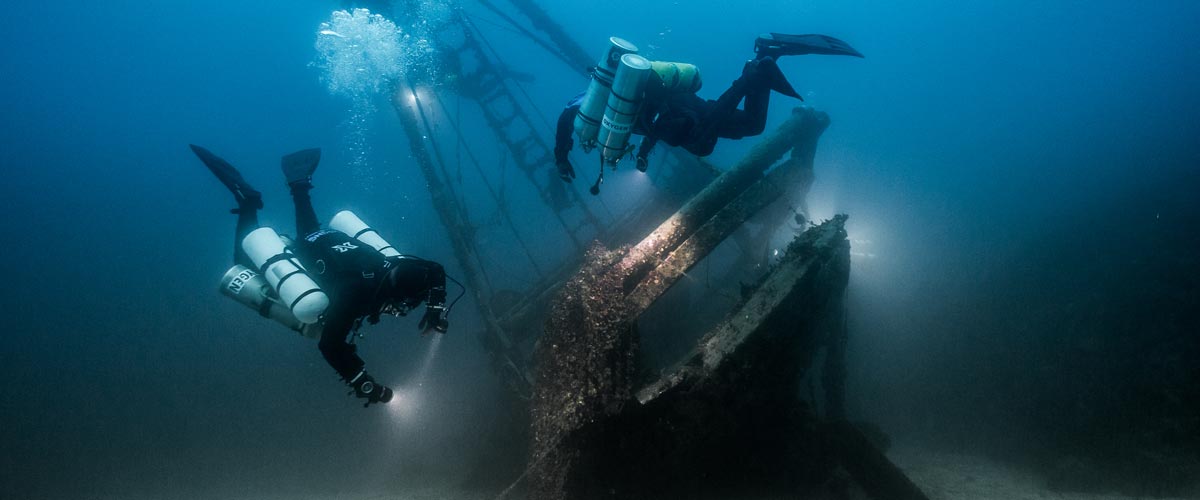
Strategies and procedures
Our strategies, those broad guiding lines tracing the path to follow, from how to approach planning to where, with what, and how we are willing to get there, will be more specific and more practical. Not because they magically become so, but because we will consciously and deliberately frame them that way.
We will establish clear, concise, and realistic procedures. Not only for the undesirable situations that may present themselves but also for those that are part of our dive objectives.
Even though, as technical divers, we often use equipment different from what we were previously accustomed to, it is essential to note that the gear does not make the diver. In a way, we could consider such equipment as the necessary tools to implement what our goal seeks to achieve, according to our strategies and procedures.
Technique plays an important role
We must put our greatest effort into learning and perfecting the different techniques we will be acquiring. Buoyancy, trim, propulsion, cylinder handling, deploying DSMBs and lift bags, valve drills, and more are essential skills we must begin to master to progress in our art. What we cannot do, when we need to do it, can harm us.
Our techniques must be effective and achieve the purpose for which they were devised. But they must also be efficient and require the least resources possible, including the time they take and the effort they demand. Effectiveness and efficiency will prevail over beauty and other considerations that may come to mind, although none of them should be mutually exclusive. A technique executed efficiently and effectively tends to have an inherent beauty.
Refining techniques is a lifelong mission. Some of them will be easy to master from the go; others, on the other hand, will be our life mission and will require many repetitions just to resemble the idea we have in mind of how they should be executed.
We must consider the environment
Our learning, the needs and musts of the practice we engage in, the experience we gradually gain, our strategies and procedures, and even our equipment and tools change with the environment.
Diving in the ocean, everything about us must be suitable for ocean dives. Conditions there rarely emulate those found in a pool, lake, or river. Variable winds and currents, greater depths, visibility conditions, other divers with uncertain skills around us, marine life, maritime traffic, distance from the coast, and many other factors add complexity and uncertainty.
It is never necessary to master the pool on the first day, but planning and aspiring to gradually cope with the ocean’s conditions is essential.
The cost of good training
We are aware that our resources are often scarce in relation to the possibilities of use we could give them if they were not. To a greater or lesser extent, we are part of the economic reality in which we are embedded.
Fortunately, the cost of good technical diver training is not an entry barrier. Comparing training and equipment costs, we see that the former are generally lower. Yes, lower cost for personalized service, essential to our future
performance and safety, than for a series of mass-produced products that are mere, albeit necessary, tools for an end.
The value of good training
The value of the training we received encompasses a range of characteristics, from emotional and methodological to technical and technological. TDI and its Introduction to Technical Diving course offer a deep and modern approach, with a teaching strategy that aims to create thinking divers, not merely obedient ones.
As technical divers, our knowledge is our primary tool. In this type of activity, what we don’t know can harm us.
Is this course optional?
Unfortunately, the fact that this Introduction to Technical Diving course is not a prerequisite for any subsequent training is an invitation to consider it optional. And we all know what usually happens to “optional” under budget constraints.
However, this course should be seen as optional only by those divers who are somehow familiar with the use of technical equipment, who have a mindset more in line with the requirements of this type of diving, who plan and execute the dives the proper “technical” way, who know their gas consumption rate, who are not intimidated by non-decompression tables, who feel comfortable using their dive computers, and know the techniques and have at least an acceptable level of buoyancy, positioning, and propulsion. Those can go straight to a more advanced training course, such as TDI’s Advanced Nitrox.
We must ask ourselves whether or not we are in that group.
Remember our goal: to have fun
Recreational diving is our passion. Jumping into the water carrying heavy equipment and having properly dotted our I’s and crossed our T’s have only one ultimate goal: fun. This is the activity we have chosen as a hobby. We must enjoy it; it must give us pleasure and make us vibrate.
Having a good time is not optional!
Blogs
Four opportunities to go pro in 2024 with Dive Friends Bonaire
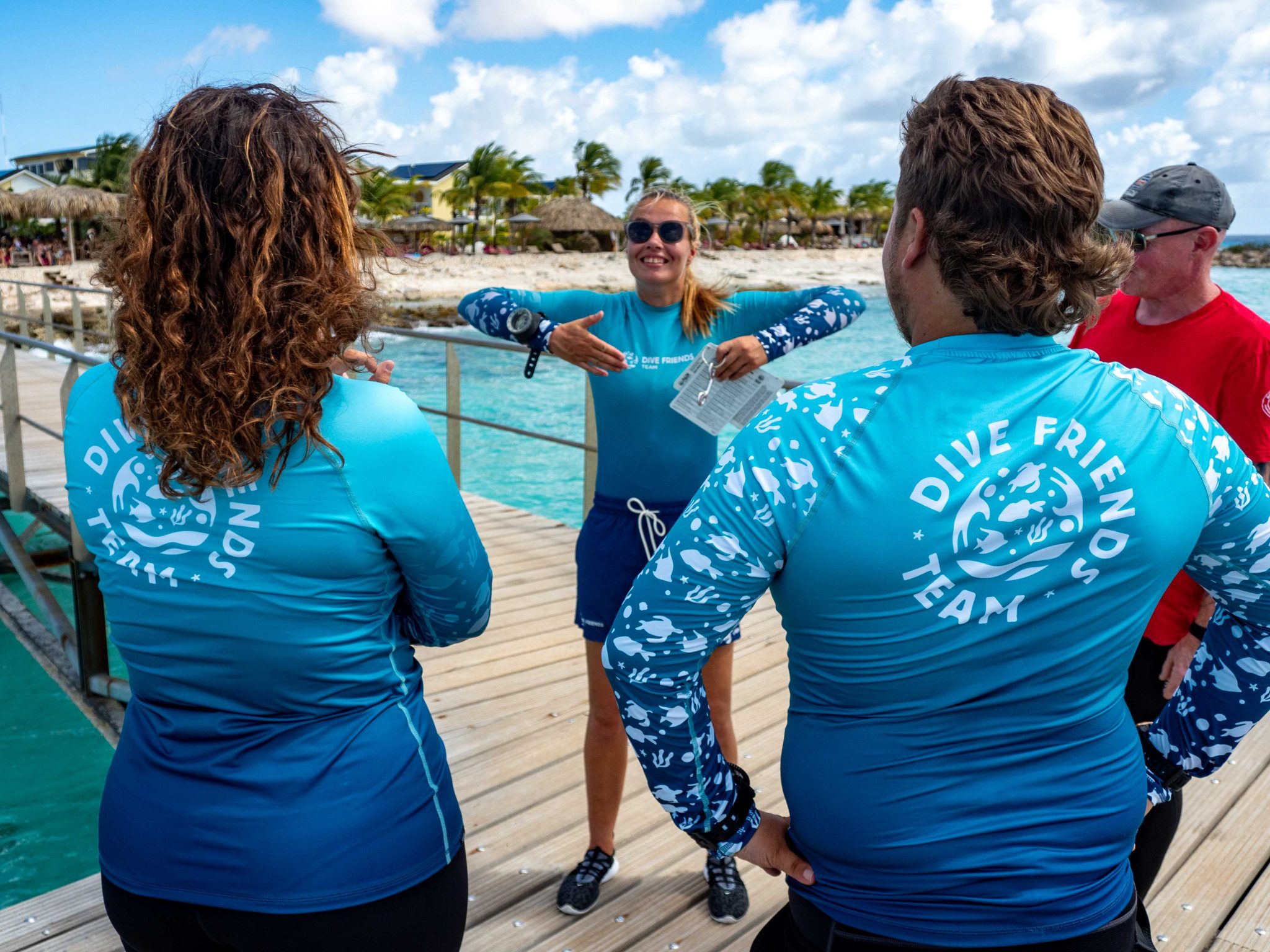
Dive Friends teaches the Instructor Development Course (IDC) several times a year to students who are eager to share their passion for diving with the world.
Dive Friends is known for the personal approach throughout the course. Their in-house course director will lead the students through every essential step, mentoring them to achieve their fullest potential as a dive instructor.
Applications for the following IDC start dates are now open:
- 12 April
- 5 July,
- 20 September
- 29 November
Partnership with Casita Palma
If the student opts for the IDC-Deluxe or IDC-Supreme package, their accommodation will be arranged for them at Casita Palma. This small and quiet resort is within walking distance from Dive Friends Bonaire’s main dive shop location and has everything you need to relax after an intense day of IDC training. Breakfast is included, so the student will always be fuelled and ready for their day.
Contact Dive Friends Bonaire’s Course Director Eddy for more information: coursedirector@divefriendsbonaire.com.
-

 News3 months ago
News3 months agoHone your underwater photography skills with Alphamarine Photography at Red Sea Diving Safari in March
-

 News3 months ago
News3 months agoCapturing Critters in Lembeh Underwater Photography Workshop 2024: Event Roundup
-

 Marine Life & Conservation Blogs3 months ago
Marine Life & Conservation Blogs3 months agoCreature Feature: Swell Sharks
-

 Blogs2 months ago
Blogs2 months agoMurex Resorts: Passport to Paradise!
-

 Blogs2 months ago
Blogs2 months agoDiver Discovering Whale Skeletons Beneath Ice Judged World’s Best Underwater Photograph
-

 Gear Reviews2 weeks ago
Gear Reviews2 weeks agoGEAR REVIEW – Revolutionising Diving Comfort: The Sharkskin T2 Chillproof Suit
-

 Gear Reviews3 months ago
Gear Reviews3 months agoGear Review: Oceanic+ Dive Housing for iPhone
-

 Marine Life & Conservation2 months ago
Marine Life & Conservation2 months agoSave the Manatee Club launches brand new webcams at Silver Springs State Park, Florida















